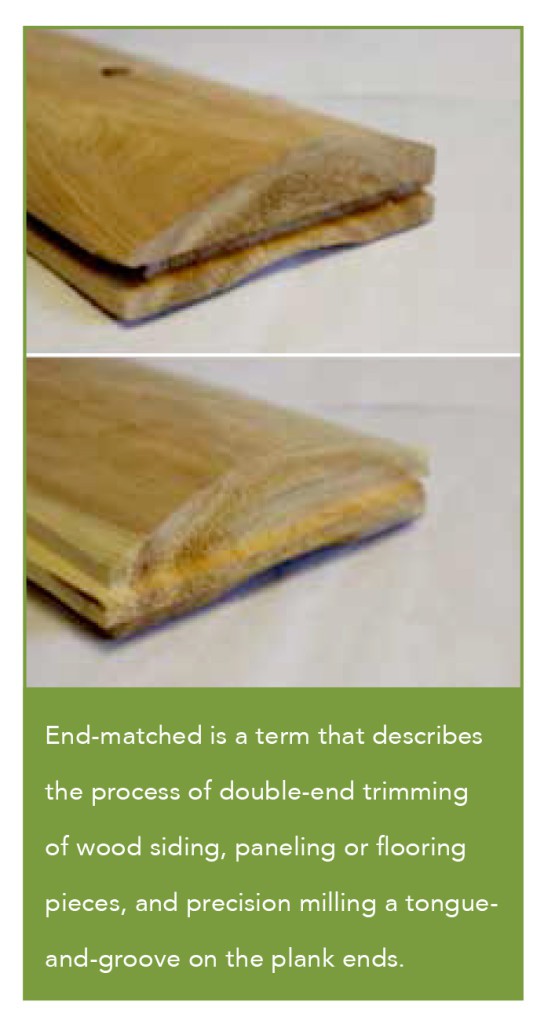3 Reasons to Choose End-Matched Wood Siding, Paneling & Flooring
 End-matching isn’t a new phenomenon. The process, which involves double-end trimming wood siding, paneling and flooring pieces and precision milling a tongue-and-groove on the plank ends, has been a building practice for more than 20 years.
End-matching isn’t a new phenomenon. The process, which involves double-end trimming wood siding, paneling and flooring pieces and precision milling a tongue-and-groove on the plank ends, has been a building practice for more than 20 years.
Yet, some builders remain hesitant to use end-matched wood. The biggest concern is often just that it’s different. Rather than 12- to 16-foot lengths, end-matched boards come in 2- to 8-foot tallies. At Heartwood Mills, our bunks are composed of roughly 30% 2- to 5-foot lengths and 70% 6- to 8-foot lengths.
The smaller size is responsible for some of the greatest benefits of using end-matched wood. These include decreasing labor, reducing waste and enhancing the natural beauty of wood siding, paneling and flooring.
3 Benefits of End-Matched Wood
1. Decreasing Labor
Simply put, end-matched boards are easier to work with. Traditional wood siding must butt to a stud in order to attach it to a home’s exterior. End-matched siding can be nailed in place anywhere on the board, eliminating the need to stop your job to cut plank ends. Simply fit each plank into pre-cut tongue-and-grooves and continue on with installation.
You also don’t need to worry about stopping to cut out defects, such as cracks or loose knots, that affect the integrity of wood siding, paneling or flooring. Defecting cracks and loose knots has already been taken care of at the mill. greatly reducing the amount of time spent measuring and cutting on each job.
2. Reducing Waste
As you can imagine, fewer cuts mean significantly less waste in materials and time. Builders have reported to Heartwood Mills that switching to end-matched wood has reduced their cut waste and labor costs by as much as 20 percent each. For this reason, Heartwood Mills recommends that builders account for only a 5 percent material waste margin when working with end-matched wood. The result is lower costs and faster builds that don’t sacrifice quality — something both builders and clients can appreciate.
3. Enhancing Natural Beauty
Small pieces of end-matched wood can be used anywhere traditional cut boards prove useful: between windows, around doors, near sharp eaves, and more. But smaller end-matched pieces look great all over a home’s exterior, too.
Nature’s beauty comes from its randomness, and that’s exactly the quality end-matched boards add to a home. Once installed, the seams blend in with the rest of the siding and add pattern that lends to the rustic, natural appearance of wood siding. In some applications, such as with hardwood flooring, end-matching creates a more consistent color and grain appearance.
End-matched wood also eliminates the need to face nail across the siding. Instead, end-matched wood siding and wood paneling can be blind nailed through the tongue of the log and the OSB sheathing and into the stud beneath it. This is a faster process that creates a stronger fit and tighter weather barrier. Concealing the nails and blocking out moisture stops bleeding around nails that can often surface onto the face of the siding.
To learn more about using end-matched wood siding, paneling or flooring, download End-Matched versus Non-End-Matched: The Builder’s Choice white paper.
